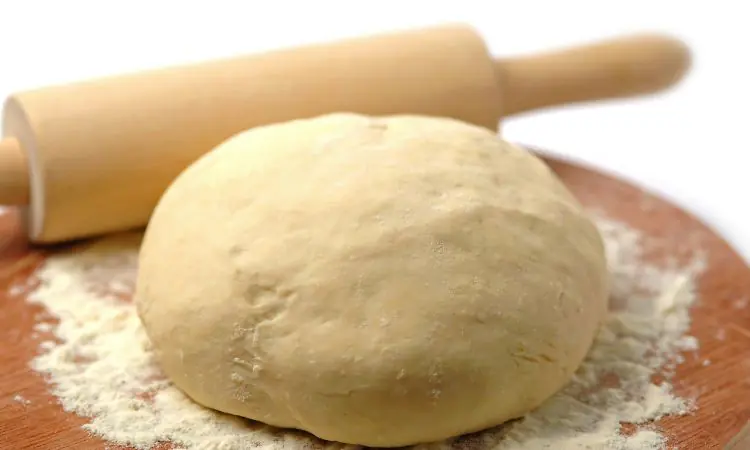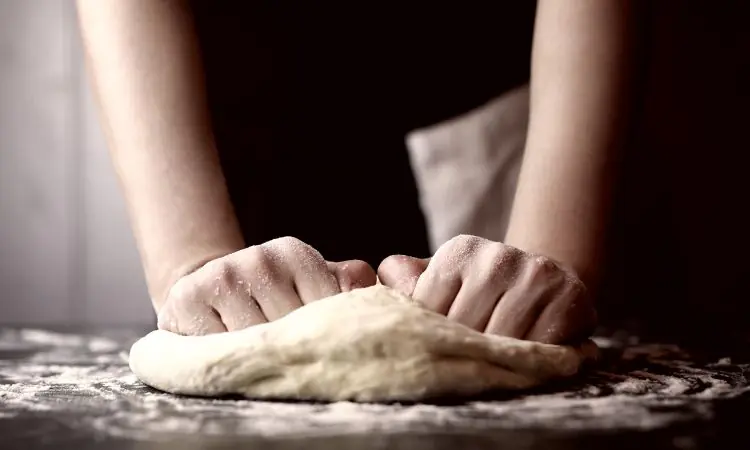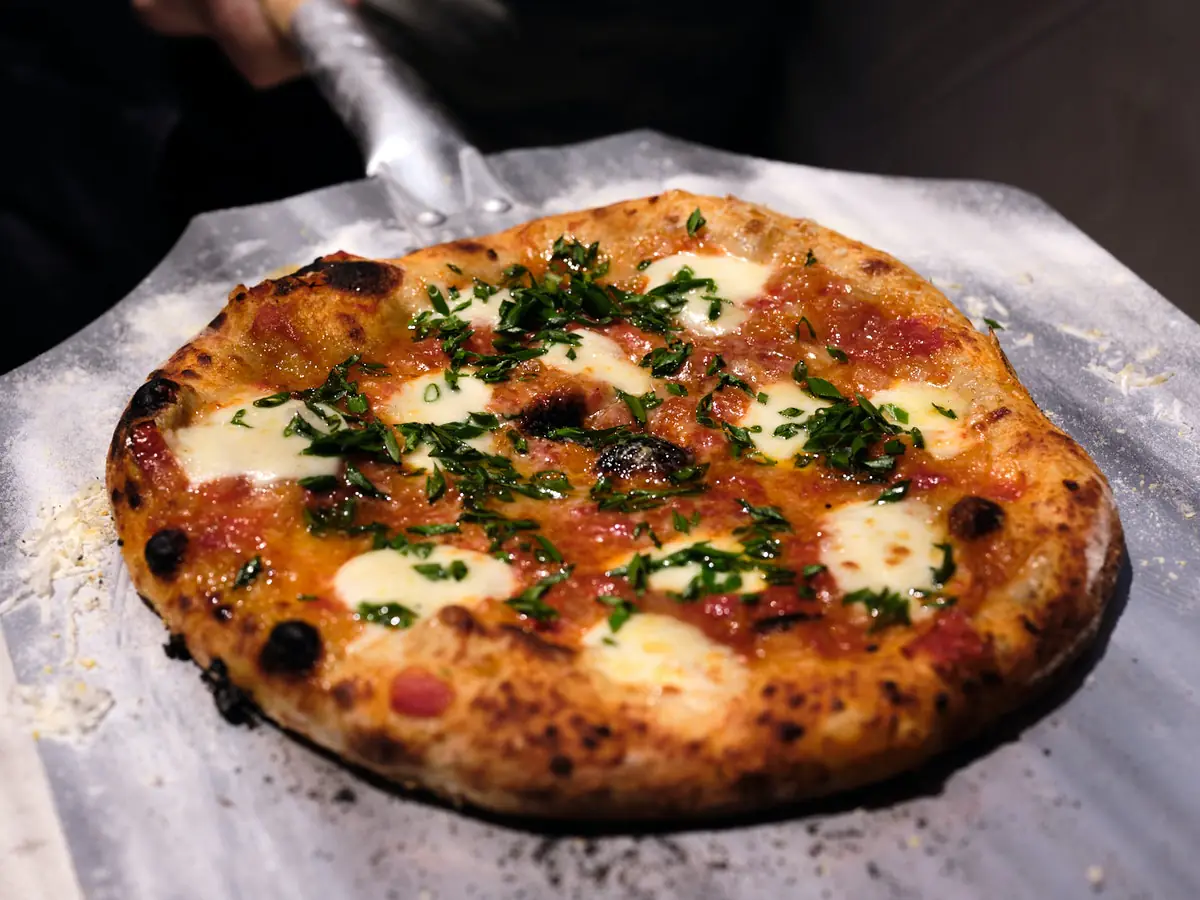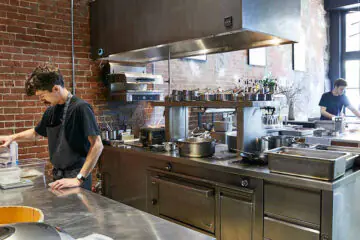To make the best pizza dough with 00 flour, combine 500g of flour with 325ml of warm water and 2 tsp of yeast. Knead the dough for 10 minutes until smooth and elastic.
Mastering the art of perfect pizza dough elevates homemade pizza to a whole new level. Pizza enthusiasts often debate the merits of different flours, but many agree that 00 flour—the finely ground Italian style—yields the most delectable crust. This coveted ingredient, prized for its high protein content and gluten structure, produces a chewy and crispy dough.
Crafting dough with 00 flour is not just about mixing ingredients; it’s a journey through tradition, embracing techniques perfected over centuries. As you embark upon this culinary endeavor, remember that patience and precision in measurements are vital to achieving that irresistible homemade pizza foundation. Whether you’re a seasoned home chef or a new cook venturing into the world of artisanal pizzas, understanding the nuances of 00 flour will put you on the path to creating a memorable pizza experience from the comfort of your kitchen.
Selecting The Right Ingredients
Making the best pizza starts with choosing top-notch ingredients. This ensures a delicious foundation for your toppings. Every element is crucial in pizza making, from the type of flour to the water quality.
Why 00 Flour Makes A Difference
00 flour is the gold standard for pizza dough. This finely ground Italian flour creates a light, stretchy dough. It leads to a crispy crust with a soft chew.
Fresh Yeast Vs. Dry Yeast
The type of yeast used can impact the rise and flavor of your dough.
| Fresh Yeast | Dry Yeast |
| Great for flavor development | Long shelf life and easy-to-store |
| It needs to be dissolved in water | It comes in active and instant types |
Fresh yeast is traditional, while dry yeast offers convenience.
The Importance Of Water Quality
Water activates the yeast and binds the flour to form a dough. The quality of water can affect the taste and texture of the dough.
The Science Behind Perfect Dough
Creating the best pizza dough feels like magic, but it’s science. Using 00 flour can lift your pizza game to professional heights. Let’s knead through the science that transforms simple ingredients into a pizza base so good it may transport you to the cobbled streets of Naples.
Gluten Formation And Elasticity
Gluten is the key to the perfect dough. When water touches flour, gluten proteins wake up. They link up and form a stretchy network. This network lets your dough expand but not break, creating the chewy texture we all love in pizza crust.
The Role Of Kneading
Kneading is where the magic happens. It turns the flour and water mix into a smooth and elastic dough. This process aligns the gluten proteins. The more you knead, the stronger the gluten network becomes. A well-kneaded dough results in a uniformly textured pizza base that’s a delight to bite into.
Resting And Fermentation Explained
Resting allows the gluten network to relax, making the dough easier to shape. Meanwhile, fermentation works its own magic. Yeast eats sugars in the flour, releasing carbon dioxide. This causes the dough to rise and develop complex flavors. A slow, cold fermentation in the fridge can lead to the best results. It’s like a long, flavor-enhancing nap for your dough.
Mastering The Mixing Process
Embarking on the quest for the ultimate pizza begins with mastering the dough. Precision in the mix sets the foundation for your pizza’s texture and taste. Let’s dive into optimizing this vital step using 00 flour, the key to an authentic, airy crust with a delicate chew.
Hand Mixing Vs. Stand Mixer
Hand mixing allows for a personal touch, feeling the dough transform under your fingers. It’s a slower process but offers control and a genuine connection with your food. In contrast, using a stand mixer saves time and distributes ingredients evenly, which is ideal when multitasking in the kitchen. Both methods can yield excellent results:
Optimal Dough Temperature
Temperature plays a critical role in dough development. Aim for a dough temperature of about 24-26°C (75-79°F). Achieve this by controlling water temperature:
| Room Temperature | Water Temperature |
| Cooler Room (18°C) | Warmer Water (~40°C) |
| Warmer Room (24°C) | Cooler Water (~20°C) |
This balance helps yeast activate effectively, strengthening gluten for the perfect rise.
Identifying The Right Texture
Recognizing the perfect dough texture ensures a standout pizza. For 00 flour, the goal is a soft, slightly tacky feel. As you knead, look for dough that:
With these checkpoints, your dough can rise and bake to golden perfection.

Rolling And Shaping Techniques
Mastering Rolling and Shaping Techniques is essential for creating the best pizza dough. With 00 flour, the dough becomes pliable and silky, perfect for stretching into your dream pizza base. Let’s explore how to make your pizza dough stand out with a uniform thickness, crisp edges, and no springback.
Achieving Uniform Thickness
Even thickness ensures consistent cooking and texture. Follow these steps:
Creating A Crisp Edge
A crunchy crust is a must for pizza lovers. To create that perfect edge:
Preventing Dough Springback
Springback can be frustrating. Combat it with these tips:
| Step | Action |
| 1 | Rest the dough. |
| 2 | Stretch the dough carefully. |
| 3 | Use warm hands to relax the gluten. |
| 4 | Avoid overworking the dough. |
Final Steps And Baking Secrets
Embarking on the final steps and unveiling the baking secrets can transform your homemade pizza into a masterpiece. The dough is now silky smooth, infused with the finest 00 flour. It’s time to let it rise and infuse it with flavors only perfect proofing can provide. Here’s how you achieve that glorious bake reminiscent of Italy’s best pizzerias.
Ideal Proofing Duration
Proofing is less about clock-watching and more about conditions. Yet, getting the timing right is crucial. Pizza dough loves a slow rise, allowing flavours to develop and the gluten network to relax.
Oven Types And Temperatures
The magic happens at high heat. A blazing hot oven guarantees a crisp, airy crust. Here are the optimal conditions:
| Oven Type | Temperature |
| Conventional Home Oven | 475-500°F (245-260°C) |
| Pizza Stone/Baking Steel | Preheat to 500°F (260°C) then bake at 475°F (245°C) |
| Wood-fired Pizza Oven | 800°F (425°C) or higher |
Heat your oven for at least 45 minutes before baking to ensure it’s sufficiently hot.
Assessing The Perfect Bake
Every pizza tells a story through its crust. The perfect bake features a golden-brown base with a slightly charred edge.
Your pizza will be irresistible with the ideal proofing duration, an understanding of your oven, and the signs of a perfect bake.
Troubleshooting Common Dough Issues
Are you encountering problems while making your pizza dough? Perfecting the art of pizza dough-making is a journey; encountering issues along the way is part of the learning process. Whether it’s a crust that’s too dense, sticky dough that won’t cooperate, or dough that hasn’t quite proofed correctly—fear not! Let’s address these common dough issues with practical solutions to ensure your pizza base comes out just right every time.
Overcoming A Dense Crust
A dense pizza crust often points to a lack of gluten development or dough that needs to be drier. To conquer this, try these steps:
Fixing Sticky Dough
Sticky dough can be a real hassle. A well-floured surface and hands can prevent sticking. Additionally:
Dealing With Underproofing
Underproofed dough lacks volume and finesse, so let’s remedy that:
Creative Variations And Toppings
Embracing creative variations and toppings can elevate your homemade pizza to a new echelon of delectable experience. Using 00 flour, renowned for yielding the softest bite and a beautiful, crisp edge, opens a world of possibilities for traditional connoisseurs and adventurous gastronomes alike.
Infusing Flavors Into Your Dough
Dough acts as a canvas for your culinary artistry. Begin by incorporating select herbs, spices, or even cheeses directly into the dough to create a flavorful base that complements your toppings:
Balancing Toppings For Ultimate Taste
Selecting toppings is an art of balance. Aim for a mix of textures and flavors to ensure every slice is a symphony of taste:
| Texture Category | Topping Suggestions |
| Creamy | Buffalo mozzarella, Ricotta |
| Crunchy | Red onion, Bell peppers |
| Savory | Prosciutto, Anchovies |
| Sweet | Figs, Caramelized onions |
Innovative Pizza Styles To Try
Feeling adventurous? Delve into these innovative pizza styles that can be both fun and impressive:


Credit: www.101cookbooks.com
Frequently Asked Questions Of How To Make The Best Pizza Dough With 00 Flour
Does 00 Flour Make Better Pizza Dough?
Yes, 00 flour can make better pizza dough due to its high gluten content. It yields a stretchy, elastic dough that is ideal for creating a light, airy crust.
What Is The Secret To Good Pizza Dough?
The secret to good pizza dough is using quality flour, hydrating correctly, kneading sufficiently, allowing proper fermentation, and mastering oven temperature control.
Which 2 Types Of Flour Make The Best Pizza Dough?
The best pizza dough typically incorporates high-gluten bread flour and Italian 00 flour for optimal texture and stretch.
What Is The Best Mix Of Flour For Pizza Dough?
The best pizza dough mix often combines all-purpose flour with high-gluten or “00” flour for optimal texture and stretch.
Conclusion
Crafting the perfect pizza dough is an art, and using 00 flour is your secret brushstroke. Embrace these tips for a chewy, airy crust that will impress. Remember, practice makes perfect, so don your apron and start your pizzaiolo journey.
The ultimate homemade pizza awaits!

As the author of the “Ultimate Pizza Guide: Recipes, Tips & Secrets Revealed,” I’m dedicated to sharing my love for pizza and empowering others to create delicious homemade pizzas with ease. Join me on a journey to uncover the secrets to perfecting your pizza game!


